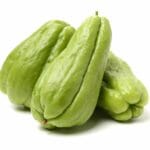Imagine the satisfaction of seasoning your meals with freshly harvested black peppercorns from your own backyard. It’s a journey that requires patience, typically taking 3-5 years, but the reward of homegrown spice is well worth the effort. This comprehensive guide provides a step-by-step approach to cultivating your own black pepper, covering everything from initial planting through to harvesting. Discover the secrets to creating your own pepper paradise, whether it be in your garden or a sun-drenched corner inside your home.
Embarking on Your Black Pepper Growing Adventure
Cultivating black pepper at home is a commitment, but the prospect of harvesting your own aromatic peppercorns makes it a fulfilling endeavor. This guide simplifies the process, offering detailed instructions and essential tips to ensure success in growing this prized spice.
Selecting Quality Seeds or Cuttings for a Strong Start
The foundation of a successful pepper crop lies in the quality of your initial planting material. Source your black pepper seeds or cuttings from reputable nurseries or specialized online suppliers. For seeds, prioritize those with a high germination rate to ensure a robust start. Healthy cuttings should be taken from disease-free plants to guarantee vigorous growth.
Creating the Ideal Tropical Environment for Your Pepper Plant
Black pepper (Piper nigrum) thrives in environments that mimic its native tropical rainforest. This means providing warmth, humidity, and dappled sunlight.
- Soil Preparation: Use well-draining soil with a slightly acidic pH between 6.2 and 7.0. Enrich the soil with compost or aged manure to provide essential nutrients.
- Temperature Control: Maintain consistent warmth, ideally between 70-85°F (21-29°C). A greenhouse or indoor environment may be necessary in cooler climates.
- Humidity Levels: Black pepper plants require high humidity. Regular misting or a humidifier can help maintain a humidity level of 60-80%.
- Light Exposure: Provide indirect sunlight, mimicking the filtered light of a rainforest. Avoid direct sunlight, which can scorch the leaves.
Propagation Techniques: Seeds vs. Cuttings Detailed
Choose between starting from seeds or using cuttings, each offering distinct advantages.
- From Seeds: Germination can be slow; soak seeds in lukewarm water overnight before planting in seed trays.
- From Cuttings: Select healthy runner shoots from a mature plant, treat with rooting hormone, and plant in a moist, well-draining medium.
Both methods require a warm, humid environment to encourage root development and initial growth.
Step-by-Step Planting Guide for Black Pepper
- Sowing Seeds: Plant seeds in seed trays filled with a well-draining potting mix. Keep the soil consistently moist and maintain a warm environment. Germination typically occurs in 30-40 days.
- Rooting Cuttings: Dip cuttings in rooting hormone and plant in pots with well-draining soil. Keep the soil moist and maintain high humidity by covering with a plastic bag or propagating dome.
- Transplanting Seedlings or Cuttings: Once seedlings have developed several true leaves or cuttings show significant root growth, transplant them into larger pots.
- Providing Support: Black pepper is a vine that requires support to grow vertically. Install a trellis or stake near the plant for the vines to climb.
Maintaining Optimal Conditions for Healthy Growth
Consistent care is vital for the health and productivity of your black pepper plants.
- Watering: Water regularly to keep the soil moist but not waterlogged. Allow the top inch of soil to dry out slightly between waterings.
- Fertilizing: Feed your plants with a balanced liquid fertilizer every two weeks during the growing season to promote vigorous growth. Adding Epsom salt can also encourage more robust development.
- Pruning: Trim the vines to encourage branching and control the plant’s size. Remove any dead or yellowing leaves to maintain plant health.
Addressing Common Pests and Diseases Naturally
Monitor your plants regularly for signs of pests or diseases. Common pests include aphids, spider mites, and mealybugs. Control pests with organic solutions such as neem oil, insecticidal soap, or introducing beneficial insects like ladybugs. Ensure proper ventilation and avoid overwatering to prevent fungal diseases like root rot.
Harvesting and Storing Your Homegrown Peppercorns
Harvesting typically begins 3-5 years after planting. Look for peppercorns that have turned a light red color.
- Harvesting: Pluck the red berries carefully, avoiding unripe green peppercorns.
- Drying: Spread the harvested peppercorns in direct sunlight on a flat surface to dry. They will shrink and turn black as they dry.
- Storing: Store the dried peppercorns in an airtight container in a cool, dry, and dark place. Properly stored peppercorns can last for up to four years.
Why Patience is Rewarded: The Unique Joys of Homegrown Black Pepper
Growing black pepper at home is a long-term investment that offers unparalleled rewards. Beyond the superior flavor of freshly harvested peppercorns, the process provides a deep connection to the natural world. Nurturing a plant from seed to spice is a uniquely satisfying experience, offering a tangible reminder of your efforts every time you season your food. Embrace the journey, and savor the fruits (or peppercorns) of your labor.















